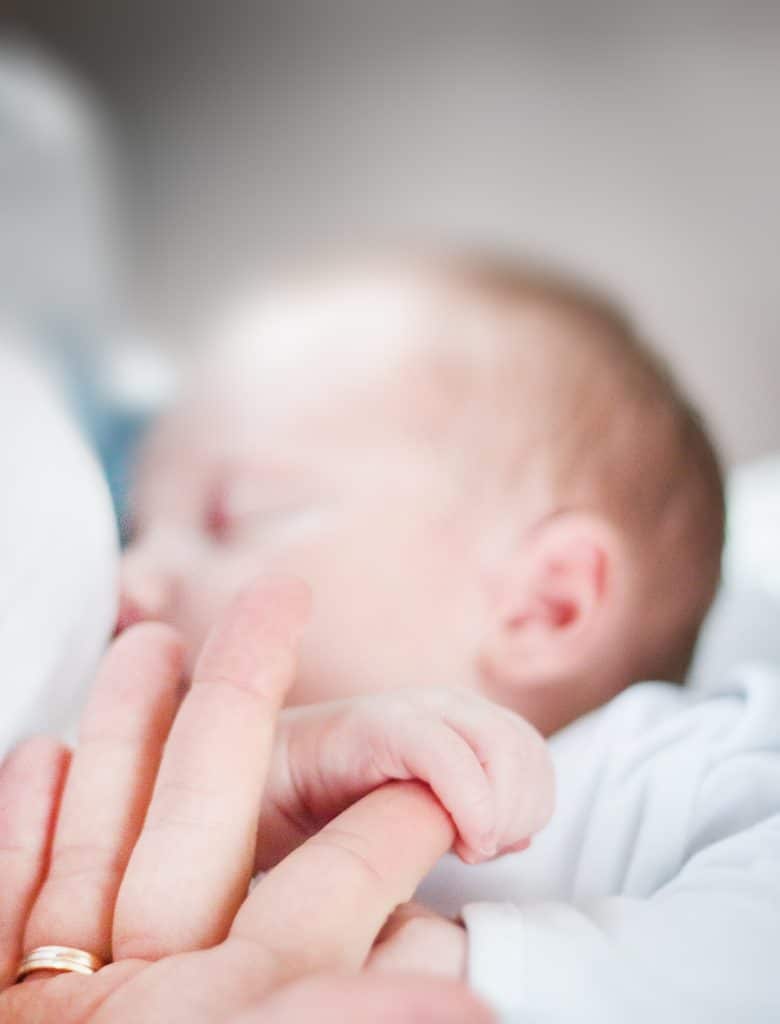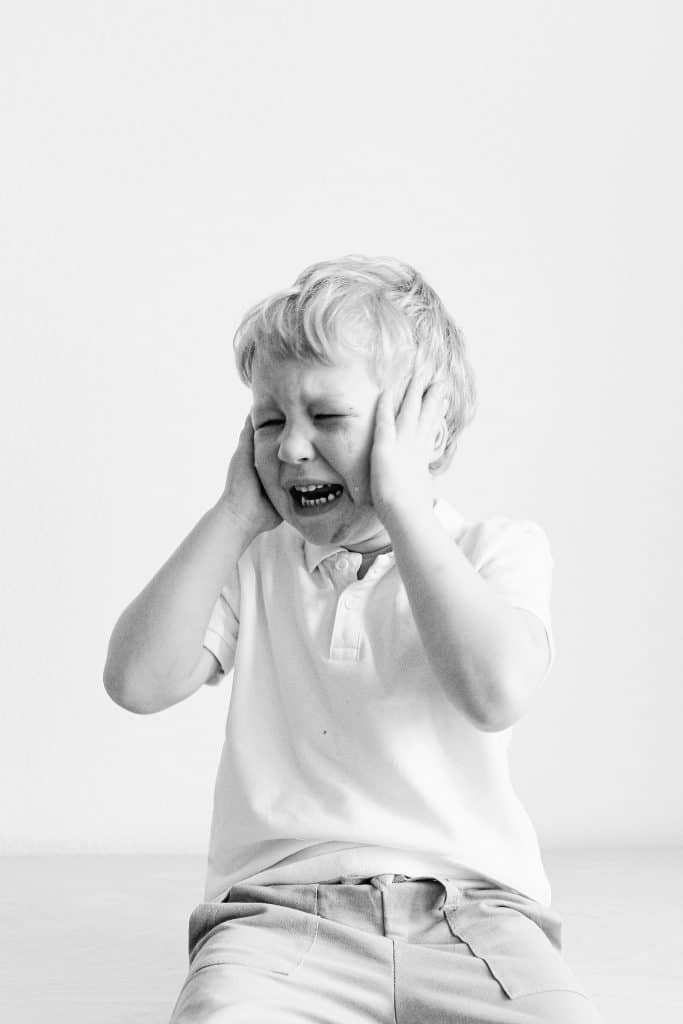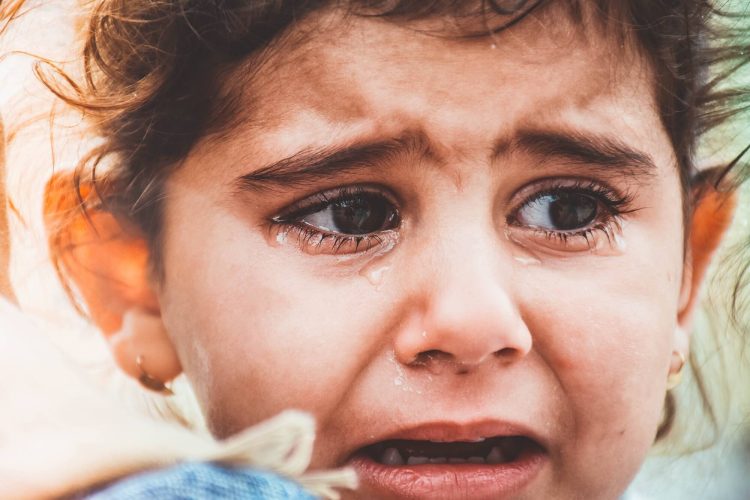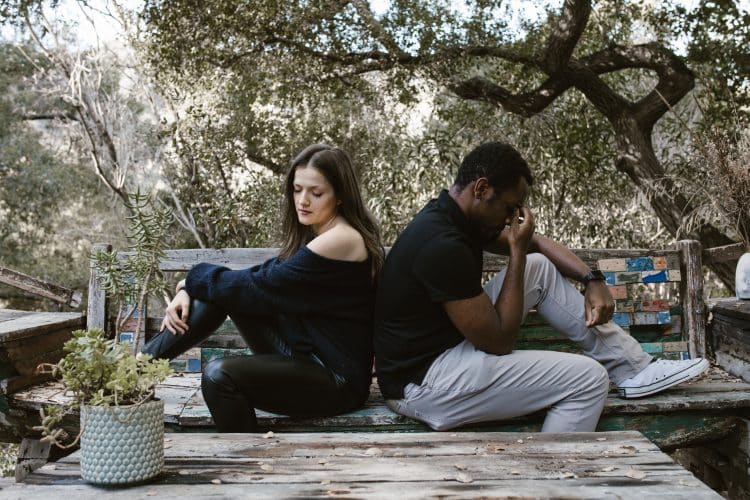Disorganized Attachment: Causes & Symptoms

Published on July 2, 2020 Updated on April 22, 2024
All you need to know about disorganized attachment
Disorganized attachment is one of the three insecure attachment styles. Unfortunately, it is often seen as the most difficult to manage of the attachment styles as it typically develops in a childhood of fear, inconsistency, and even abuse.
A disorganized / fearful-avoidant attachment style can develop when a child’s caregivers–their only source of safety–become a source of fear.
As adults, people with the disorganized attachment style can be extremely inconsistent in their behaviors and experience difficulties with their self-beliefs and with trusting others. Such issues can potentially lead to mental health issues such as mood disorders.
However, there is hope–with the proper treatment and information, it is always possible to heal from an insecure attachment, even if you have a disorganized attachment style.
In this guide, we will cover the most common questions around disorganized attachment:
- How does attachment form in early childhood?
- How do children develop insecure attachment styles?
- What specifically causes disorganized attachment in children?
- How do children with disorganized attachment react to their caregivers?
- What are relationships with disorganized adults like?
- Can you change a disorganized attachment style?
- How to heal from disorganized attachment?
How Does Attachment Form in Early Childhood?

As soon as a baby is born, the bonding process with their caregivers (usually parents) begins. For the first few years, the child is entirely dependent on their caregivers as they are responsible for the child’s primary physiological needs (food, shelter, safety, and so on), as well as their emotional ones (love, care, support, and so on).
If caregivers are sensitive towards, attuned to, and consistently respond to these needs, a child starts to build the foundations of a secure attachment, as their caregiver’s presence equals safety.
As a result, the child learns indirectly that they can rely on, and thus, trust other people. A secure and stable attachment is formed.
However, in some cases, a child perceives that their needs are not met and that their caregivers are not emotionally available or responsive when they seek their attention, affection, or support. As a result, the child is unable to form a secure bond and, instead, may develop an insecure attachment.
We’ve discussed the basics of how attachment styles form, but what are the three types of insecure attachment?
There are three types of insecure attachment:
- Anxious (or preoccupied also referred to as anxious-ambivalent in childhood)
- Avoidant (or dismissive also referred to as anxious-avoidant in childhood)
- Disorganized (also referred to as fearful-avoidant in childhood)

How Does the Disorganized or Fearful Avoidant Attachment Style Develop?
Insecure attachment styles typically develop as a response to misattuned parenting and as a form of adaptation.

Anxious Attachment Style
For example, if a child perceives the parents as unpredictable or neglecting, the child might become overly clingy and needy. In other words, the child lacks attention and starts working harder to get it.
Later on in life, this child (now a teenager or adult) continues to question whether they are good enough, lovable, or worthy.
Such individuals can develop a low self-esteem and need constant reassurance from their partners. This is known as an anxious attachment style, which is characterized by a strong fear of abandonment and rejection.
Avoidant Attachment Style
If the child perceives that their emotional needs are rejected by the parents, the child stops expecting any response from their parents. Thus, the child learns that they should not express emotions openly or seek support, because they are not going to receive such.
As time goes by, such children (now grown-up) become self-sufficient and independent. Other people will reject their emotions anyway, so why bother trying to express them? This is the ‘strategy’ behind the avoidant attachment style.
Disorganized Attachment Style
We see that there is a sort of continuity and coherence in each of the two attachment styles described above.
What makes the disorganized / fearful-avoidant attachment style different is that it implies a lack of coherence in the individual’s social behavior.
Most attachment specialists believe that the disorganized attachment style is the most difficult of the three insecure attachment styles to treat because it incorporates both the anxious and the avoidant styles.
What causes disorganized attachment in children?

The disorganized attachment style is believed to be a consequence of childhood trauma or abuse. Perceived fear is the central aspect of its development.
The survival of the infant/child depends on the caregivers. The child knows that subconsciously, so he or she seeks safety in the caregivers. A problem arises when the source of safety becomes a source of fear.
If the caregivers show highly contrasting behavior, which is inconsistent and unpredictable, the child can start fearing his or her own safety.
The child does not know what to expect. Nor does the child know when the caregiver will meet their needs, if at all.
Another reason for fear is having or witnessing a traumatizing experience that involves the attachment figure.
For instance, the caregiver abuses the child (verbally, physically, or sexually) or the child witnesses the caregiver abuse someone else.
Either way, the child no longer trusts the caregiver. The child realizes that they cannot rely on caregivers to meet their physical or emotional needs. The caregivers, who should be acting as a source of safety, are not only unreliable, but they are also causing fear.
Children with a disorganized attachment style are not able to truly adapt to the caregivers’ behavior, as they never know what comes next.
Such children lack coherence in their own behavior towards the caregivers: they might seek closeness, but at the same time, reject the caregivers’ proximity and distance themselves, due to fear.
What do relationships with disorganized adults look like?
Adults with a disorganized attachment style in relationships lack of a coherent approach. On the one hand, they want to belong. They want to love and be loved.
While on the other hand, they are afraid to let anyone in. They have a strong fear that the people who are closest to them will hurt them.
Adults with a disorganized attachment style fear intimacy and avoid proximity, similar to individuals with an avoidant attachment style. The main difference for disorganized adults is that they want relationships.
These adults expect and are waiting for the rejection, disappointment, and hurt to come. In their perception, it is inevitable.
They do not reject emotional intimacy; they are simply afraid of it. Adults with a disorganized attachment style continue to view the attachment figure (once, their caregiver, and now, their partner) as unpredictable.
They have trouble believing that their partner will love and support them as they are. These adults expect and are waiting for the rejection, disappointment, and hurt to come. In their perception, it is inevitable.
This mindset can turn into a form of self-sabotage, causing the disorganized adult to end a relationship prematurely.
It might also be a type of self-fulfilling prophecy. So, the disorganized adult expects and predicts that they will be rejected by their partner. Even when there are no such signs, he or she starts behaving in a way that leads to fulfilling the expectations (the end of the relationship).
It is also a self-fulfilling prophecy when an individual with a disorganized attachment style chooses partners that induce fear. Thus confirming their perception that they can’t trust other people (emotionally or physically), no matter what.
Disorganized adults tend to have a negative view of both themselves and others.
They are at a higher risk of developing mental health issues, such as substance abuse, delinquent/aggressive behavior, and abuse on their own children.
Research also demonstrates a link between the disorganized attachment style in adults and borderline personality disorder.
Can you change a disorganized attachment style?
Living with a disorganized attachment style is certainly not easy. Imagine playing a game that you never really understood the rules of.
You want to play with others, but no one ever taught you how. When it’s your turn, you make your move, but you never know what to expect afterwards. You keep losing without knowing why.
Fortunately, there are ways to heal. And it is important to do so for yourself, for your loved ones, and eventually, for your children.
A disorganized attachment style can cause a lot of distress and confusion when it comes to social interactions and intimacy. It can harm your relationships and lead you to lose someone you really want in your life.
Being around or with someone with this attachment style is also challenging. The unpredictability, suspicion, and lack of trust from that individual can be hurtful and frightening.
A caregiver with a disorganized attachment style raising a child is one of the key predictors of a child’s emotional development.
So, if you, as a parent, have an unresolved trauma or loss, you are likely to raise a child with a disorganized attachment style.
How to heal a disorganized attachment style in adults?
One of the key issues in people with this attachment style is fear of someone they trust hurting them. The easiest solution? Do not trust anyone. This, however, is not a very productive or fruitful solution.
Simply avoiding proximity will not heal the trauma or the painful childhood experiences. In order to learn to build secure relationships, you need to learn to trust people first.
This sounds easy, but for adults with a disorganized attachment style, it can be quite challenging. For this reason, it might be best to start off easy and not push yourself.
One way to start healing is by working with a psychotherapist. A therapist is someone you can trust, as he or she will offer a non-judging, accepting, calm, and predictable space for you to open up.
You might be able to express and make sense of your experiences, emotions, and needs in a safe environment.
Another option you could consider is trying to heal on your own. That could be a promising approach, as it does not push your limits that much. It does not require trusting a stranger right away.
We recently released our first series of attachment style digital workbooks to help guide you.
The disorganized attachment digital workbook includes:
- 193 pages and 36 practical exercises
- How disorganized attachment affects you in over 10 different areas of life
- Groundbreaking and up-to-date research on disorganized attachment
- An easy-to-digest intro to attachment theory
- Case studies, summaries, and reflection sections
FAQs on disorganized attachment style
How to fix disorganized attachment style in adults?
There’s no easy “fix” for the disorganized attachment style, but it is possible to heal from the disorganised attachment style and develop more secure outlooks, attitudes, and relationships. As we mentioned in this article, the best way to heal a disorganized attachment style is through the therapeutic relationship. Furthermore, understanding how your attachment style formed and is maintained by reactions to triggers helps in this process.
How to deal with disorganized attachment?
Dealing with disorganized attachment can be a challenge as it is considered to be the most unpredictable of the insecure attachment styles. However, it is possible to learn how to deal with this attachment style in healthy ways. To improve your quality of life and relationships, you could try therapy, workbooks, and self-soothing strategies.
Why do I have the disorganized attachment style?
The disorganized attachment style is rooted in a childhood of perceived fear; caregivers, who should be a source of safety, are instead a source of alarm. However, to fully understand how the disorganized attachment style forms in childhood, consult the section in this article on how the disorganized attachment style develops.
Empower your Instagram feed
If you liked this post and want to learn more about attachment theory, then we recommend following The Attachment Project on Instagram. We regularly post content to help you make sense of attachment theory in various contexts.
Sources:
Ainsworth, MD, Bell, SM.(1970). Attachment, exploration, and separation: Illustrated by the behavior of one-year-olds in a strange situation. Child Development, 41(1), 49-67.
Bowlby, J.(1982). Attachment and Loss: Volume 1 Attachment. 2nd ed. New York: Basic Books.
Mikulincer, M., Shaver, P.R. (2007). Attachment in Adulthood: Structure, Dynamics, and Change. Guilford Press.












 Get mental health tips straight to your inbox
Get mental health tips straight to your inbox








